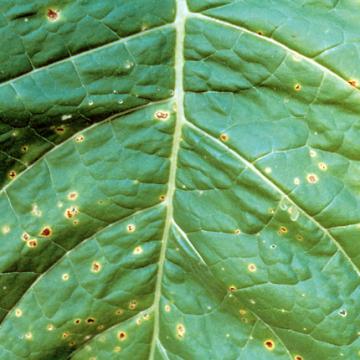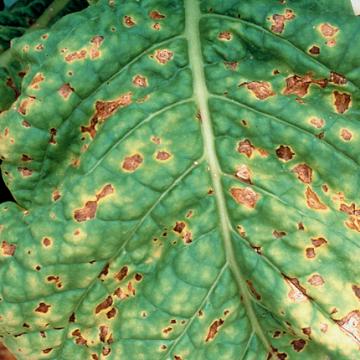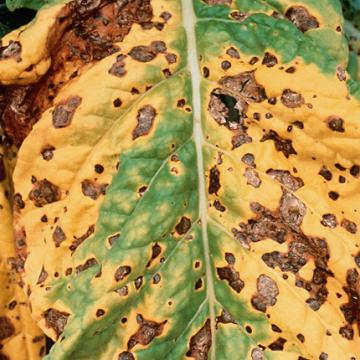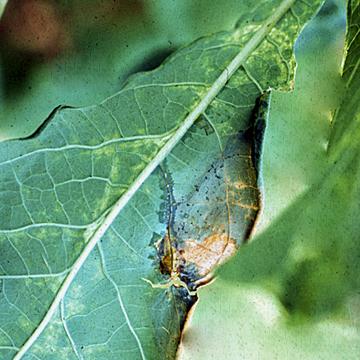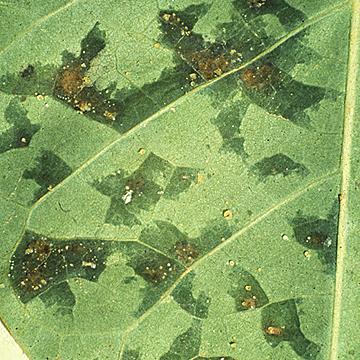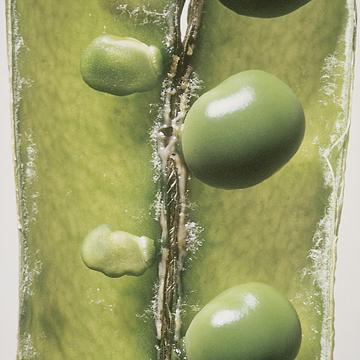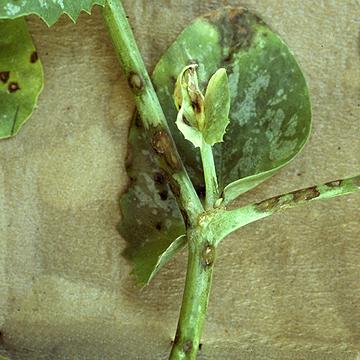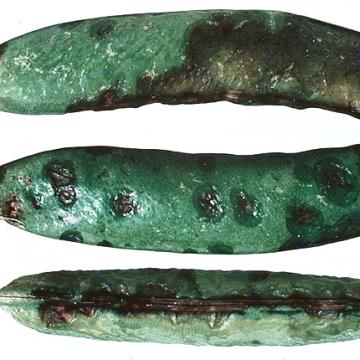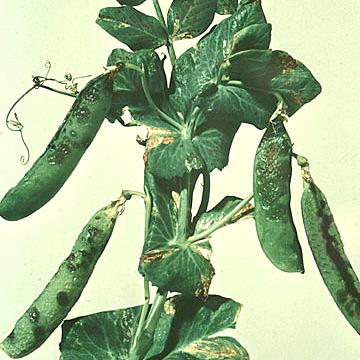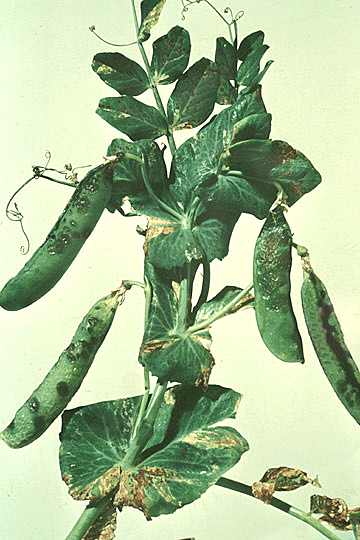DISEASE: Angular leaf spot
HOST: Tobacco
Leaf with light brown, angular spots. The difference between this disease and wildfire of tobacco is that wildfire is caused by a strain that produces tabtoxin. It causes conspicuous halos around lesions and large parts of a leaf may turn yellow .
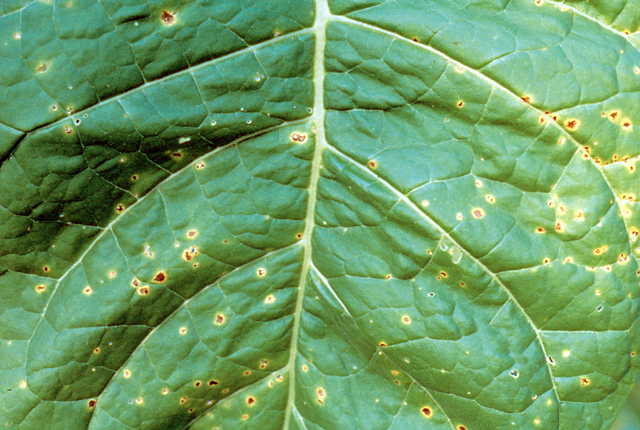
Angular leaf spot | Tobacco
DISEASE: Angular leaf spot
HOST: Tobacco (Nicotiana tabacum)
PATHOGEN: Pseudomonas syringae pv. tabaci
SOURCE: H. Shew
DISEASE: Angular leaf spot
HOST: Tobacco
Yellowing of adjacent tissues occur as spots age (midseason). It causes conspicuous halos around lesions. Large parts of a leaf may turn yellow.
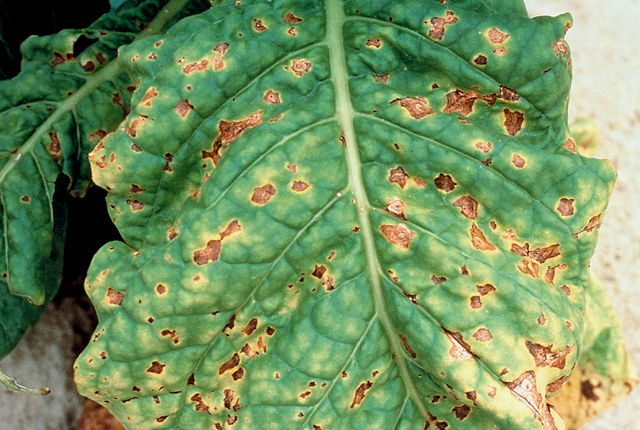
Angular leaf spot | Tobacco
DISEASE: Angular leaf spot
HOST: Tobacco (Nicotiana tabacum)
PATHOGEN: Pseudomonas syringae pv. tabaci
SOURCE: H. Shew
DISEASE: Angular leaf spot
HOST: Tobacco
Severely diseased leaf with extensive yellowing.
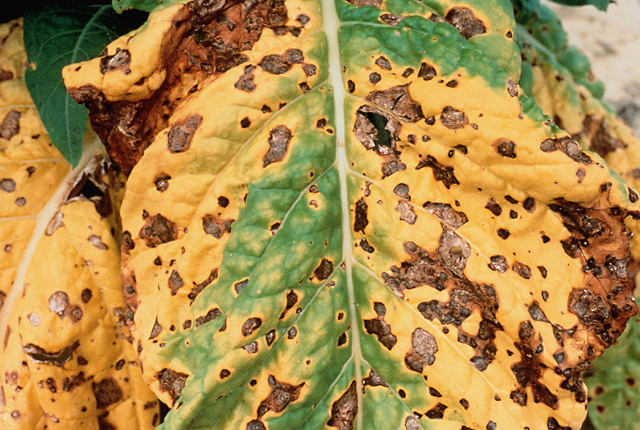
Angular leaf spot | Tobacco
DISEASE: Angular leaf spot
HOST: Tobacco (Nicotiana tabacum)
PATHOGEN: Pseudomonas syringae pv. tabaci
SOURCE: H. Shew
DISEASE: Bacterial blight
HOST: Cassava
Leaf with angular, water-soaked, vein-delimited lesions.
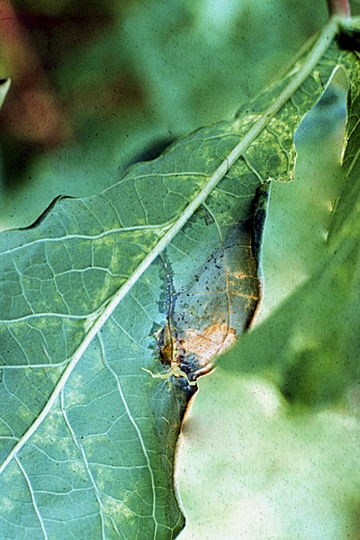
Bacterial blight | Cassava
DISEASE: Bacterial blight
HOST: Cassava (Manihot esculenta)
PATHOGEN: Xanthomonas axonopodis pv. manihotis
PATHOGEN SYNONYM: Xanthomonas campestris pv. manihotis
SOURCE: A. Hayward
DISEASE: Bacterial blight
HOST: Cassava
Cassava with angular leaf spots and yellow ooze. Symptoms include leaf spots, wilt, and dieback. The bacterium frequently invades systemically.
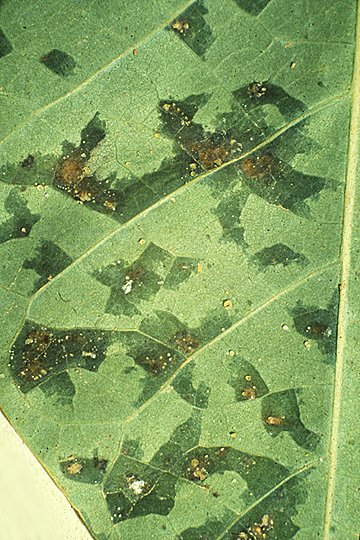
Bacterial blight | Cassava
DISEASE: Bacterial blight
HOST: Cassava (Manihot esculenta)
PATHOGEN: Xanthomonas axonopodis pv. manihotis
PATHOGEN SYNONYM: Xanthomonas campestris pv. manihotis
SOURCE: A. Hayward
DISEASE: Bacterial blight
HOST: Pea
Pea pod with diseased seeds and infection along the suture.
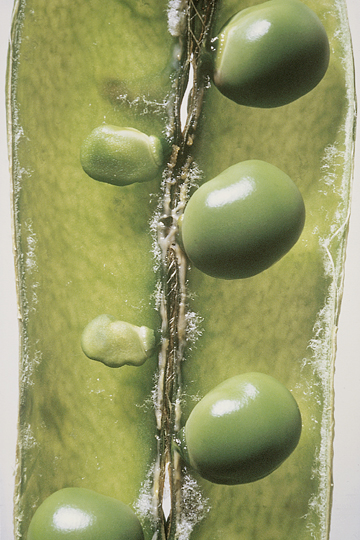
Bacterial blight | Pea
DISEASE: Bacterial blight
HOST: Pea (Pisum sativum)
PATHOGEN: Pseudomonas syringae pv. pisi
SOURCE: J. M. Kraft
DISEASE: Bacterial blight
HOST: Pea
Pea plant with water-soaked lesions on stems and leaves with some bacterial exudate evident. Irregular lesions turn dark brown with light tan centers. Severe distortion of stems, petioles, and growing points may occur.
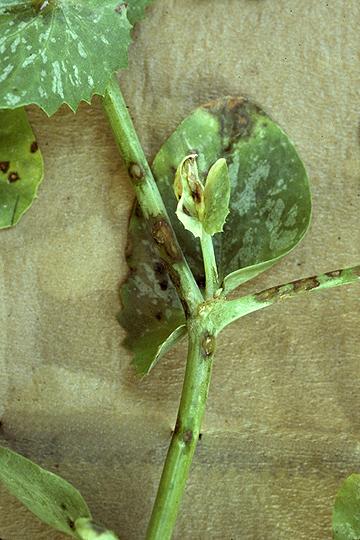
Bacterial blight | Pea
DISEASE: Bacterial blight
HOST: Pea (Pisum sativum)
PATHOGEN: Pseudomonas syringae pv. pisi
SOURCE: S. Thomson
DISEASE: Bacterial blight
HOST: Pea
Dark lesions on pods and dorsal sutures.
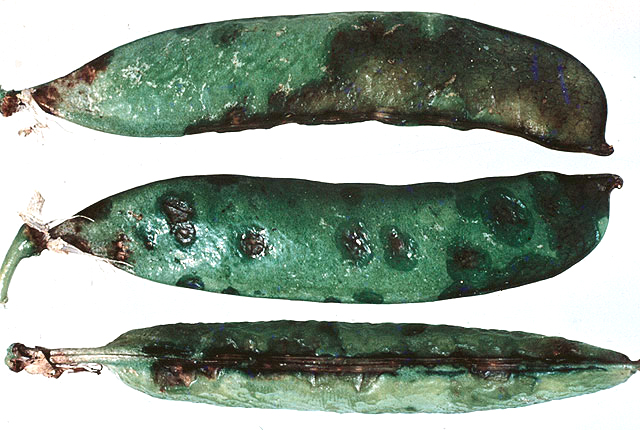
Bacterial blight | Pea
DISEASE: Bacterial blight
HOST: Pea (Pisum sativum)
PATHOGEN: Pseudomonas syringae pv. pisi
SOURCE: J. Young


